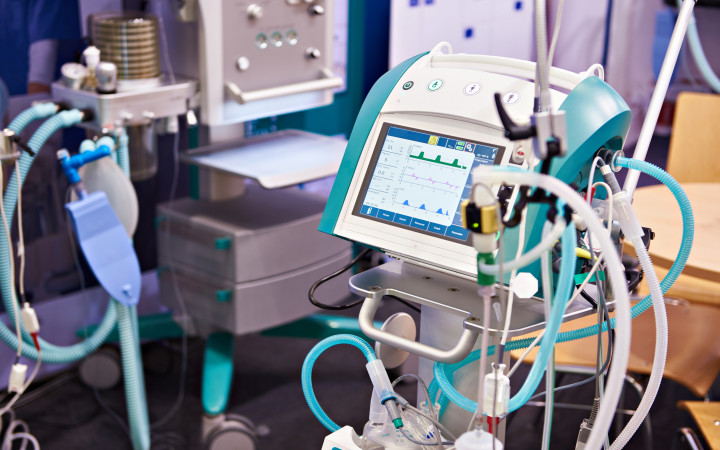Today’s Wonder of the Day was inspired by Axel. Axel Wonders, “how do iron lungs work?” Thanks for WONDERing with us, Axel!
Can you name any truly life-changing inventions? There have been many over the course of human history. Just look at the field of medicine, for example. In this area alone, inventions like vaccines, anesthesia, and the stethoscope have changed the world.
Today’s Wonder of the Day is about another medical invention. Before the creation of respirators, it helped people who couldn’t breathe on their own. That’s right—today, we’re learning about the iron lung.
Iron lungs aren’t common today, but there was a time when they could be found in many hospitals. Invented in 1928, they offered treatment for severe cases of polio. This illness, which affected mostly children, could lead to life-threatening issues. It could even cause paralysis.
In these cases, patients could even lose the ability to breathe. This happened when the virus affected the diaphragm, a muscle below the lungs. Many of these patients regained the ability to breathe after a few weeks or months using an iron lung. Others relied on the machine for the rest of their lives.
How do iron lungs work? They rely on air pressure. To begin the treatment, patients are put on a sliding bed. A nurse or doctor pushes the bed into the machine, which is a large metal tube. Once patients are inside the lung, only their heads are outside of the tube. A rubber seal around their neck stops air from escaping the machine.
When the iron lung is switched on, it increases air pressure inside the tube. This causes the lungs to deflate, forcing the patient to exhale. Then, the air pressure decreases. This, in turn, leads the patient to inhale as their lungs inflate.
When patients begin treatment with an iron lung, they spend most of their time inside the machine. They may be taken out for mere minutes a day until they’re able to breathe on their own. As such, they rely on nurses, doctors, and other hospital staff to help them with everyday tasks like eating and changing clothes.
Does anyone still use an iron lung today? Yes, though they are very few. One example is Paul Alexander, who was diagnosed with polio in 1952 at age six. Today, Alexander can spend short periods of time, sometimes hours, outside of the lung. He has built a successful career as an attorney and lived a full life thanks to the breathing support he receives from this machine.
Thanks to vaccines, there hasn’t been a new case of polio in the U.S. since 1979. This has made it difficult for Alexander to find replacement parts for his iron lung. It’s also difficult to find people to repair the machine. Additionally, insurance companies no longer cover the repairs. As he relies on the machine for survival, Alexander must pay for its upkeep out-of-pocket.
Have you ever seen an iron lung in action? Today, hospitals opt for modern respirators in place of these devices. Still, the iron lung is to thank for the survival of many children who contracted polio in the 20th century. Can you think of any other medical inventions that have changed the world?
Standards: CCRA.R.1, CCRA.R.2, CCRA.R.4, CCRA.R.10, CCRA.W.2, CCRA.W.4, CCRA.W.9, CCRA.W.10, CCRA.L.1, CCRA.L.2, CCRA.L.3, CCRA.L.6, CCRA.SL.1, CCRA.SL.2




